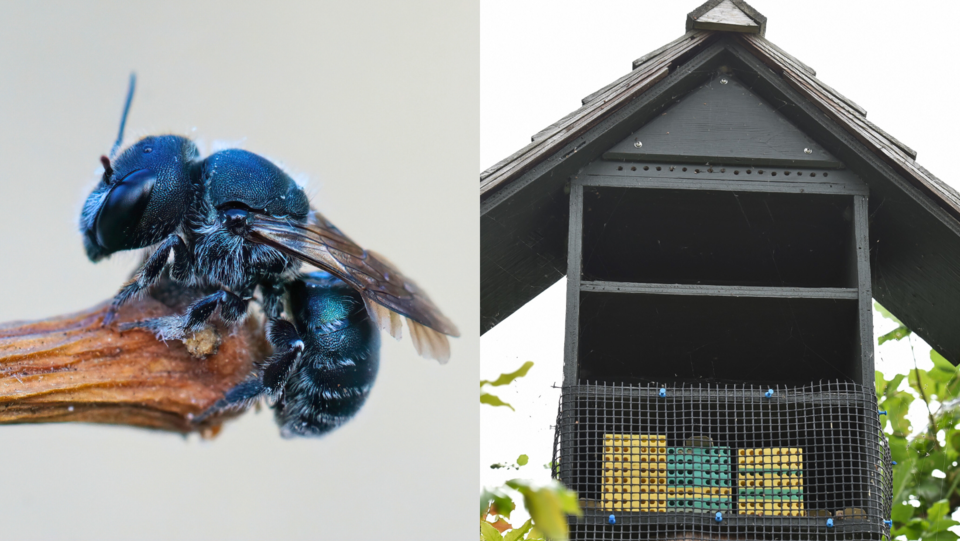Have you ever seen the Air Bee n' Bee in Stanley Park?
Before you go searching for a two-storey single home with people coming and going, note the spelling. This isn't for people, it's for the bees.
Specifically, a local blue-ish bee that likes its alone time. When most people think of bees they think of European honey bees, the classic yellow and black hive dwellers.
However, the local orchard mason bee is a bee of a different stripe, literally and figuratively.
"It's a solitary bee, aside from what most of us know of bees with the hive and the queen bee," says Marisa Bischoff, a conservation technician with the Stanley Park Ecology Society (SPES).
They're the ones that run the Air Bee n' Bee in Stanley Park, on the east side of the Lost Lagoon.
"In nature, they can use hollow stems or holes in the ground made by other creatures," says Bischoff. "To augment their population we can put out these artificial nesting trays."
The Air Bee n' Bee, which has been in place for a few years, is filled with trays that contain the bee cocoons.
"Over the winter they hibernate basically, and then in the spring they emerge again," says Bischoff.
The SPES keeps hundreds of mason bees in a fridge in preparation for the spring, then they fill the Air Bee n' Bee, among other places.
Once the bees are in their adult form they don't remain in the Air Bee n' Bee long; it's a short-term stay.
They only spend about a month or two in their adult form. Once the female emerges from the cocoon they mate, find a nesting site, and build a little home for their eggs (with partitions and pollen for the larva to eat when they hatch). Then they lay their eggs. Later, the eggs hatch and eat the food left for them by their mother.
They then create their cocoon.
Because of their different life cycle, orchard mason bees visit way more blossoms than honey bees. They're extremely effective pollinators of native plants to the area, says Bischoff.
"Six mason bees can pollinate one fruit tree," she notes, explaining it can take 10,000 honey bees to do the same job.
A single mason bee can visit up to 2,400 blossoms in a day.
"People rely on honey bees a lot for pollination, but they're not as efficient as native pollinators," she adds.
However, native pollinators are facing issues.
"Our native pollinators have been suffering a lot due to habit loss, insecticide," says Bischoff.
That's why SPES started the Air Bee n' Bee, to help get local mason bees out into the wild and educate people about the native pollinator. She says people can help in different ways, from planting native plants and even raising their own orchard mason bees
"They're really hardy and easy to proliferate," says Bischoff. "They're easy to help along."



